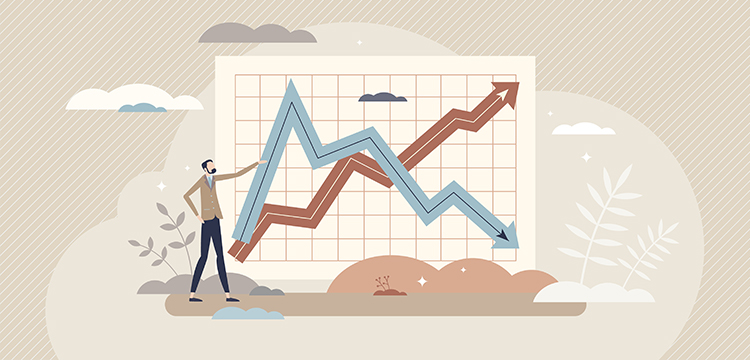The question
A colleague recently asked me to explain the concept of "stagflation". I took this to be a compliment about my mastery of economics, but it may just as much have been because she associates the term stagflation with the 1970s and thinks I am so old that I will remember.
The answer
Put simply, stagflation was a phrase coined for a time when there is high inflation and a recession. It was seen as remarkable because perhaps the most common cause of inflation is excess demand in the economy. That is when people want to buy more goods and services than can be supplied, which causes prices to increase. By contrast, when stagflation occurs, there is not excess demand. In fact, the economy is actually shrinking, so understanding what is causing inflation becomes critical and developing policies to address it is much harder.
That was my explanation to my colleague last week, but economic data released today by the UK Office for National Statistics (ONS), told the story rather more vividly. The headline was that the UK economy shrank by 0.3% during April. It was generally expected that the April figure would show an increase after a fall of 0.1% in March and so the figures are worse than anticipated.
Now technically, that doesn't mean we are in a recession, which is officially defined as two consecutive quarters of decline, but it means we are heading pretty significantly in that direction. We all know from the news each day that inflation is currently running at somewhere between 7% and 9%, and most commentators predict further increases. So that sounds pretty close to stagflation to me.
What is going on?
So why is it happening? Well back in the 1970s, the period most closely connected with the term, stagflation was commonly considered to be caused by two things: the oil crisis pushing up input prices; and distortions in the labour market, which many thought were caused by the disproportionate power of some unions.
Looking at the situation today, the rapid increase in the price of fuel seems eerily familiar. Oil producers have struggled to keep up with soaring demand as the world emerges from lock down, and the problem in the UK has been exacerbated by a weak pound. Add in the conflict in Ukraine and the consequent sanctions against Russian oil and you have something of a perfect storm.
So what about the second of the issues from the 1970s – the disproportionate power of the unions? That is less easy to point to in 2022, although many would see the forthcoming rail strikes as evidence of a group of workers who can exercise disproportionate power through disruption. But the real distortions in the labour market come from a shortage of labour. Fuelled by the so-called great resignation, by changing attitudes to work, caused by the pandemic, and by the Brexit induced shortage of overseas labour, we see a labour market out of equilibrium. From the shortage of haulage drivers last year, to the recent chaos at UK airports as the airlines were unable to deal with the half-term peak of holiday makers, we see disruption caused not by difficult workers or unions, but by a simple shortage of people in the labour market.
The devil in the detail
These are issues that aren’t going to go away anytime soon. And there’s little comfort if you look at the detail of the new economic data. All three of the UK's largest sectors – manufacturing and production, construction, and services – saw a shrinkage in April:
- Driven by a fall in manufacturing of 1.0%, caused by increases in prices and supply chain shortages, production fell by 0.6% in April.
- Construction had seen strong growth in March, when there was significant repair and maintenance activity following the storms in February, but it too fell in April by 0.4%.
- Services were the most significant contributor to the fall in April's GDP, but there may be a ray of sunlight here. The fall of 0.3%, was driven significantly by a large decrease in "human health and social work", which was due to the end of free testing and a significant reduction in test and trace activity.
This last point is a permanent decrease, but it is a one-off, and while it was a critical part of the COVID strategy, it is questionable whether it has ongoing economic benefit. If the production of goods and the provision of other services grow to make up the test and trace shortfall, then we will have a healthier economy.
Who cares?
Unfortunately, this is a situation we all need to care about. The rapid rise in the cost of living has a significant impact on all but the most fortunate. What's more, the solution is not obvious. Over the last 30 years, central banks and governments have become expert at dealing with demand pull inflation by using the interest rate as a way of dampening off the excess demand. But stagflation is much more difficult to deal with.
The problems described above, such as supply chain shortages, the soaring cost of power, and a disproportionate reliance on the service sector, are structural issues which can’t be solved by a change in interest rates. They require serious long-term investment and coming hot on the heels of the pandemic, and its massive public cost, that may be difficult to finance.
Things will come good over time – wars come to an end eventually and markets do not stay out of equilibrium for ever – but in the meantime, we should perhaps all be relieved that it is not us that has to come up with the solutions!
Alan Nelson is an author for accountingcpd. To see his courses, click here.

You need to sign in or register before you can add a contribution.